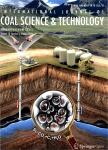Effects of calcium on the evolution of nitrogen during pyrolysis of a typical low rank coal
作者机构:School of Chemical and Environmental EngineeringChina University of Mining and Technology(Beijing)Beijing100083China Department of New Energy Science and TechnologyNanjing Forestry UniversityNanjing210037JiangsuChina
出 版 物:《International Journal of Coal Science & Technology》 (国际煤炭科学技术学报(英文))
年 卷 期:2020年第7卷第2期
页 面:397-404页
核心收录:
学科分类:081702[工学-化学工艺] 0808[工学-电气工程] 08[工学] 0817[工学-化学工程与技术] 0818[工学-地质资源与地质工程] 0807[工学-动力工程及工程热物理] 0815[工学-水利工程] 0813[工学-建筑学] 0814[工学-土木工程]
基 金:This work was supported by the National Key Research and Development Program(Grant No.2016YFB0600303031) National Natural Science Foundation of China(Grant No.51876093).
主 题:Brown coal Pyrolysis Nitrogen Calcium Transformation
摘 要:This study aims to investigate the effects of calcium on the migration of nitrogen in coal(coal-N)to N-containing gas species,particularly,NH3 and HCN(volatile-N)in volatiles,as well as the chemical transformation of the N in char during coal pyrolysis under different temperatures.The pyrolysis experiments of Shengli brown coal and its derived coal samples loaded with different contents of calcium were conducted under 600–800°C in a novel fluidized bed reactor.The experimental results showed that during coal pyrolysis,the generation of NH3 is mainly derived from secondary reactions among volatiles,tar and char with the catalytic effect of mineral matter,especially calcium in coal.Increasing pyrolysis temperature from 600 to 800°C could enhance the release of N in coal to volatiles.Meanwhile,the increased pyrolysis temperature could also inhibit the generation of NH3 while facilitating the formation of HCN.The release of HCN is more sensitive to pyrolysis temperatures.Specifically,under higher pyrolysis temperatures,more N-containing structures in coal would become thermally unstable and crack into HCN;On the other hand,higher pyrolysis temperature could also enhance the decomposition of N in coal to N-containing species in tar or N2,thus reducing the release of HCN and NH3.Nitrogen in tar could either undergo secondary decomposition reactions,generating NH3,HCN,N2 and other N-containing species in gas phase,or experience condensation polymerization by forming macromolecular structure and be retained in char at high pyrolysis temperatures.Calcium could significantly restrain the release of N from coal,thus reducing the yields of NH3 and HCN.During coal pyrolysis,calcium catalytically enhances the fracture and combination of chemical bonds,generating abundant free radicals.These free radicals could continuously attack N-containing structures and consequently release the N-containing gaseous products,such as NH3,HCN,N2 etc.,resulting in the decrease of N in char.Calcium also plays important roles in nitrogen transformation in char during coal pyrolysis by catalytically intensifying the transformation of N in char from pyridinic nitrogen(N-6)and pyrrolic nitrogen(N-5)to quaternary type nitrogen(N-Q)during coal pyrolysis.



